Country
code
ID
Crash of a Rockwell Grand Commander 680E in Boise
Date & Time:
Sep 21, 2015 at 1620 LT
Registration:
N222JS
Survivors:
Yes
Schedule:
Weiser - Boise
MSN:
680E-721-28
YOM:
1959
Crew on board:
1
Crew fatalities:
Pax on board:
0
Pax fatalities:
Other fatalities:
Total fatalities:
0
Captain / Total hours on type:
2500.00
Aircraft flight hours:
7500
Circumstances:
The commercial pilot was conducting a personal flight. He reported that he did not recall what happened the day of the accident. One witness, who was former pilot, reported that he saw the airplane fly over his house and that the engines sounded as if they were "out of sync." A second witness, who lived about 5 miles away from the airport, reported that she saw the airplane flying unusually low. She added that the engines sounded terrible and that they were "popping and banging." A third witness, who was holding short of the runway waiting to take off, reported that he saw the airplane approaching the runway about 75 ft above ground level (agl). He then saw the airplane descend to about 50 ft agl and then climb back to about 75 ft agl, at which point the airplane made a hard, right turn and then impacted terrain. Although a postaccident examination of both engines revealed no evidence of a mechanical failure or malfunction that would have precluded normal operation, the witnesses' described what appeared to be an engine problem. It is likely that one or both of the engines was experiencing some kind of problem and that the pilot subsequently lost airplane control. The pilot reported in a written statement several months after the accident that, when he moved the left rudder pedal back and forth multiple times after the accident, neither the torque tubes nor the rudder would move, that he found several of the rivets sheared from the left pedal, and that he believed the rudder had failed. However, postaccident examination of the fractured rivets showed that they exhibited deformation patterns consistent with overstress shearing that occurred during the accident sequence. No preimpact anomalies with the rudder were found.
Probable cause:
The pilot's failure to maintain airplane control following an engine problem for reasons that could not be determined because postaccident examination of both engines and the rudder revealed no malfunctions or anomalies that would have precluded normal operation.
Final Report:
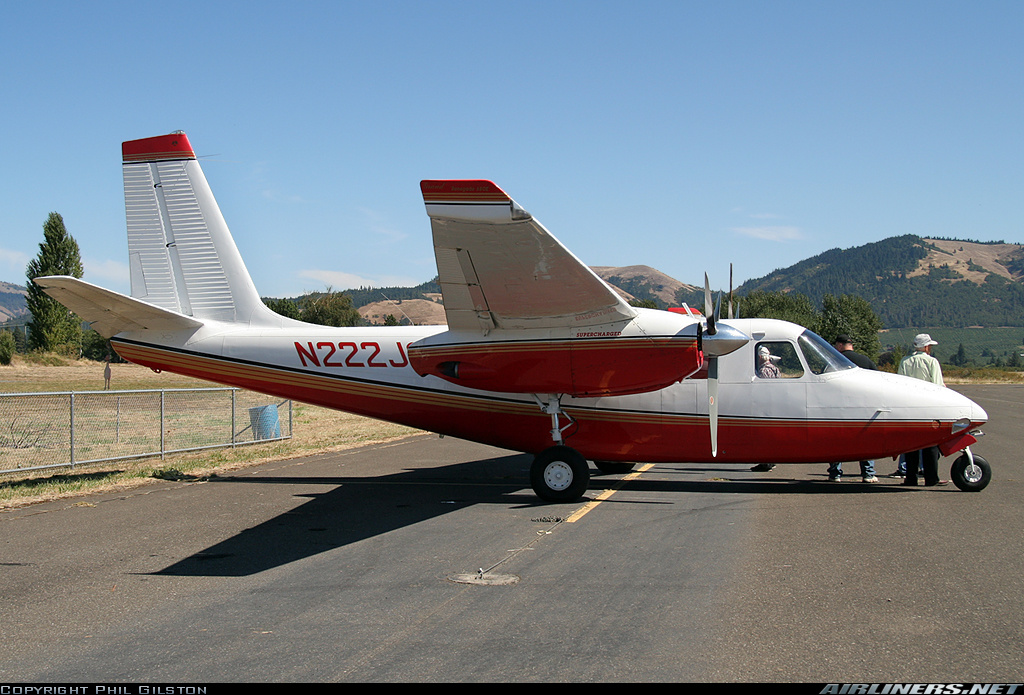
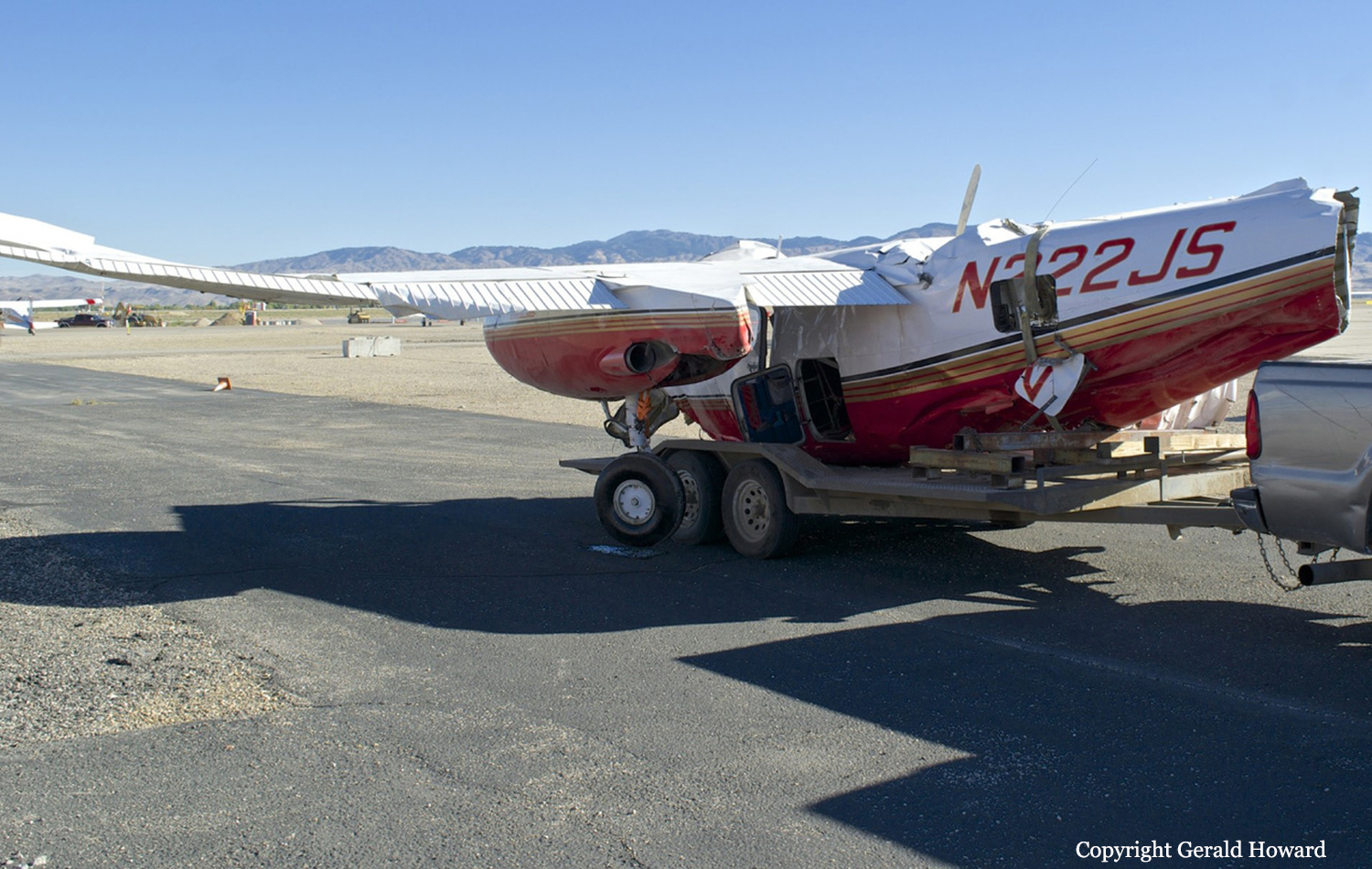
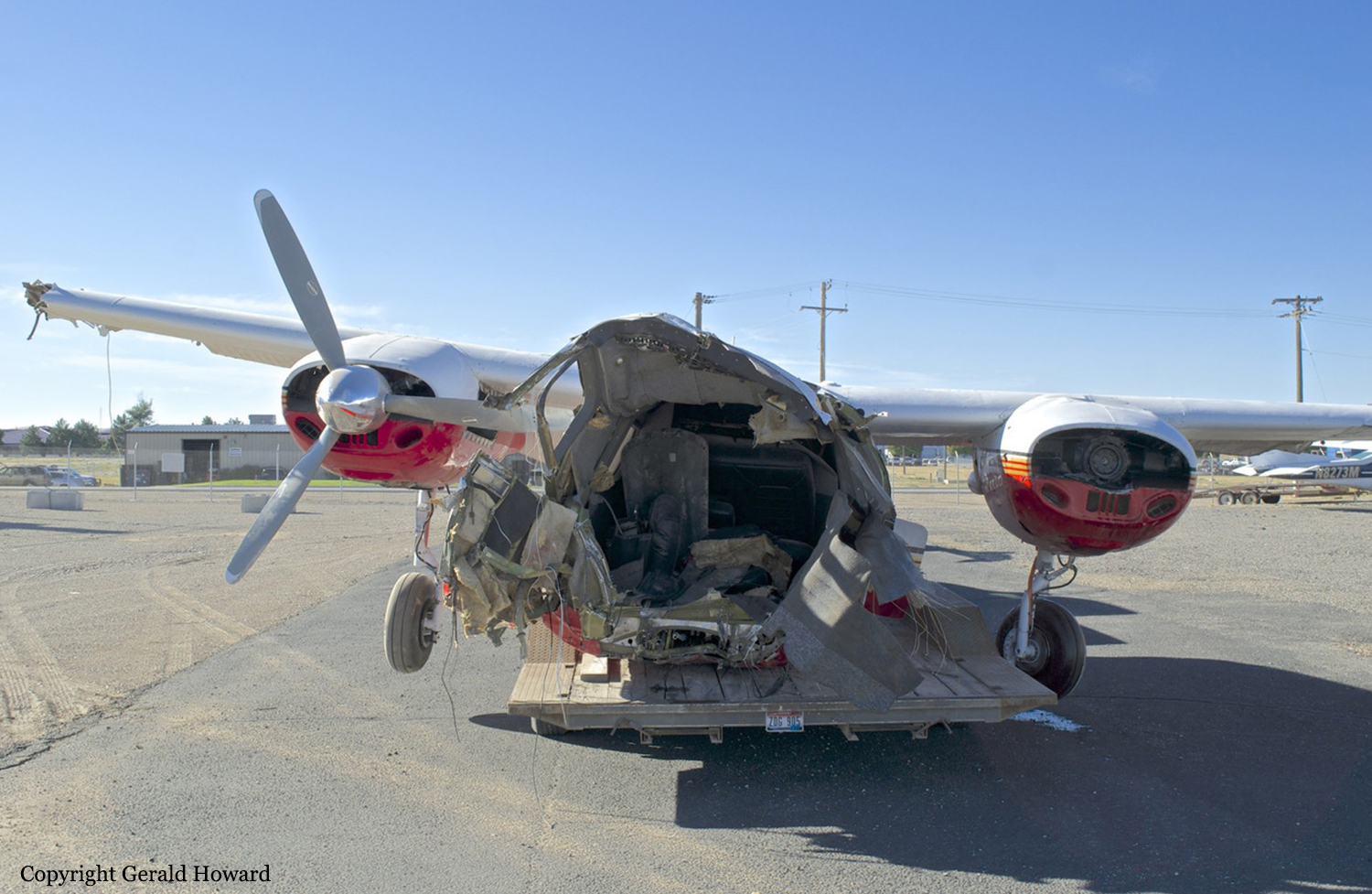

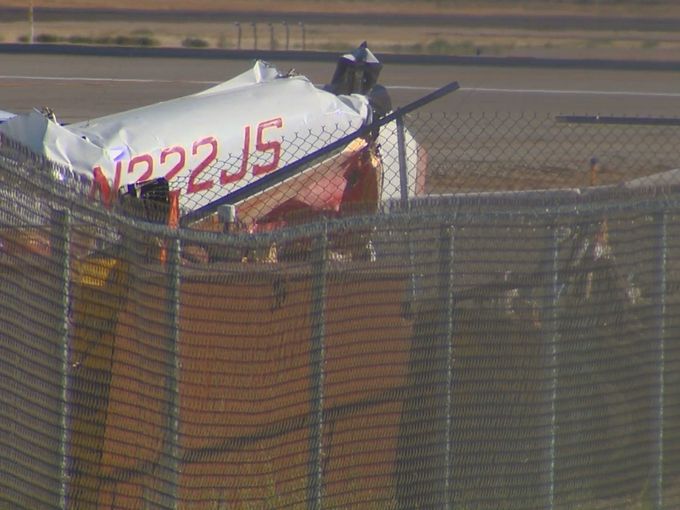
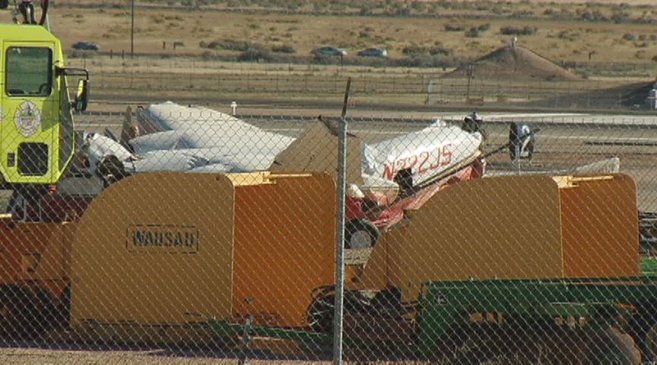
Crash of a Beechcraft C90A King Air in Idaho Falls
Date & Time:
Sep 19, 2013 at 1553 LT
Registration:
N191TP
Survivors:
Yes
Schedule:
Pocatello – Idaho Falls
MSN:
LJ-1223
YOM:
1989
Crew on board:
1
Crew fatalities:
Pax on board:
2
Pax fatalities:
Other fatalities:
Total fatalities:
0
Captain / Total hours on type:
2500.00
Aircraft flight hours:
4468
Circumstances:
The airplane was equipped with two main fuel tanks (132 usable gallons each) and two nacelle fuel tanks (60 usable gallons each). In normal operation, fuel from each nacelle tank is supplied to its respective engine, and fuel is automatically transferred from each main tank to its respective nacelle tank. While at the airplane's home airport, the pilot noted that the cockpit fuel quantity gauges indicated that the nacelle tanks were full, and he believed that the main tanks had fuel sufficient for 30 minutes of flight. The pilot did not verify by any other means the actual fuel quantity in any of the tanks. Thirty gallons of fuel were added to each main tank; they were not topped off. The airplane, with two passengers, then flew to an interim stop about 45 miles away, where a third passenger boarded. The airplane then flew to its destination, another 165 miles away. The pilot reported that, at the destination airport, he noted that the cockpit fuel quantity gauges indicated that the nacelle tanks were full; he surmised that the main fuel tanks were not empty but did not note the actual quantity of fuel. Forty gallons of fuel were added to each main tank. Again, the main tanks were not topped off, and the pilot did not verify by any other means the actual fuel quantity in any of the tanks. The return flight to the interim stop was uneventful. The third passenger deplaned there, and the airplane departed for its home airport. While on final approach to the home airport, both engines stopped developing power, and the pilot conducted a forced landing to a field about 1.2 miles short of the runway. The pilot later reported that, at the time of the power loss, the fuel quantity gauges indicated that there was still fuel remaining in the airplane. Postaccident examination of the airplane revealed that all four fuel tanks were devoid of fuel. The examination did not reveal any preimpact mechanical anomalies, including fuel leaks, that would have precluded continued flight. The airplane manufacturer conducted fuel-consumption calculations for each of the two city pairs. Because the pilot did not provide any information regarding flight routes, altitudes, speeds, or times for any of the flight segments, the manufacturer's calculations were based on direct routing in zero-wind conditions, nominal airplane and engine performance, and assumed cruise altitudes and speeds. Although the results are valid for these input parameters, variations in any of the input parameters can significantly affect the calculated fuel requirements. As a result, although the manufacturer's calculations indicated that the round trip would have burned less fuel than the total available fuel quantity that was derived from the pilot-provided information, the lack of any definitive information regarding the actual flight parameters limited the utility of the calculated value and the comparison. The manufacturer's calculations indicated that the accident flight leg (from the interim airport to the home airport) would have consumed about 28.5 gallons total. Given that the airplane was devoid of fuel at the accident site, the pilot likely departed the interim airport with significantly less than the manufacturer's minimum allowable departure fuel quantity of about 39.5 gallons per side. The lack of any observed preimpact mechanical problems with the airplane, combined with the lack of objective or independently substantiated fuel quantity information, indicates that the airplane's fuel exhaustion was due to the pilot's inadequate and improper pre- and inflight fuel planning and procedures.
Probable cause:
The pilot's inadequate preflight fuel planning, which resulted in departure with insufficient fuel to complete the flight, and consequent inflight power loss due to fuel exhaustion.
Final Report:
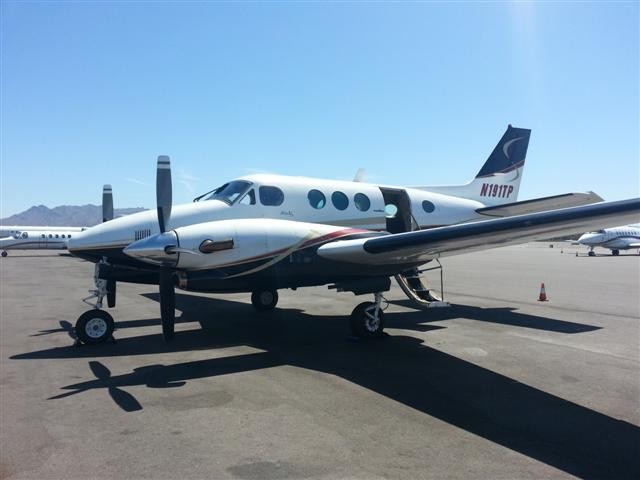
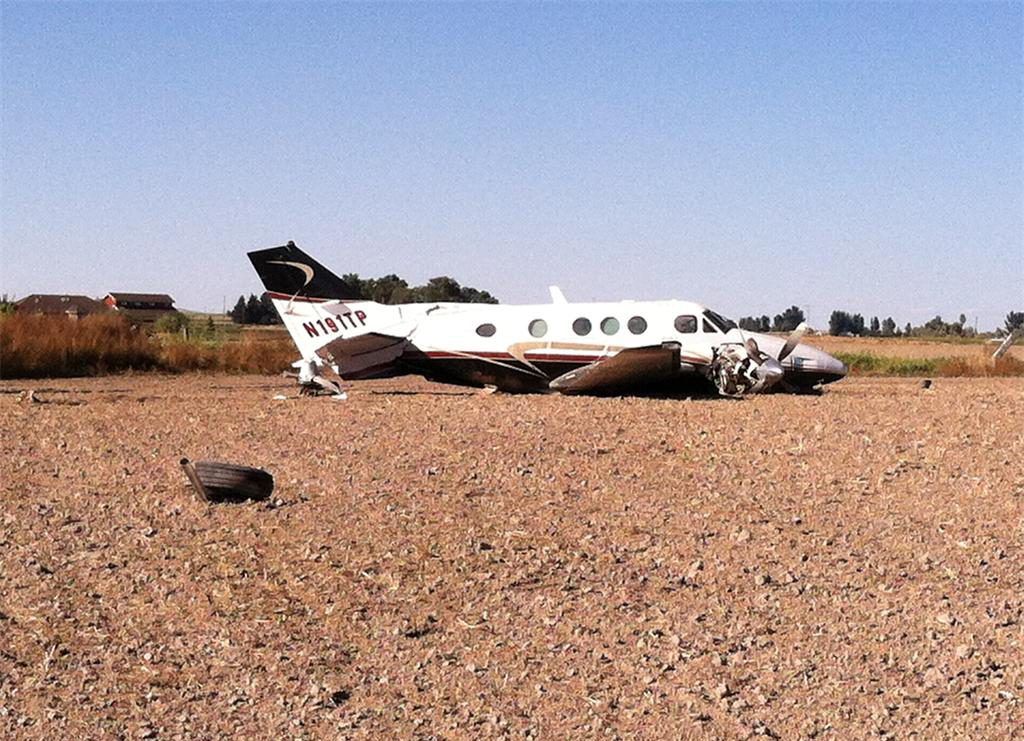
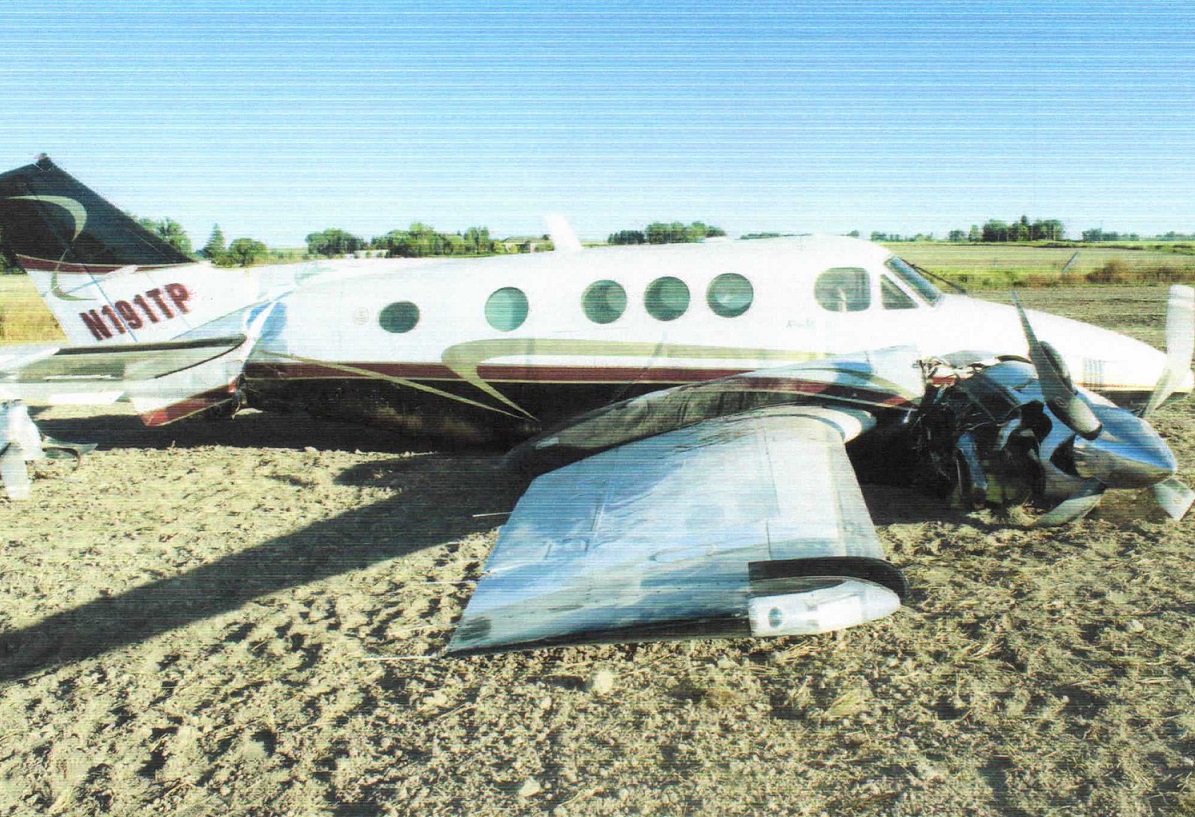
Crash of a Beechcraft A60 Duke in Minidoka
Date & Time:
Aug 13, 2009 at 1541 LT
Registration:
N99BE
Survivors:
Yes
Schedule:
Pocatello – Boise
MSN:
P-132
YOM:
1970
Crew on board:
1
Crew fatalities:
Pax on board:
1
Pax fatalities:
Other fatalities:
Total fatalities:
0
Captain / Total hours on type:
800.00
Aircraft flight hours:
3120
Circumstances:
The pilot reported that he planned to fly a round trip cross-country flight. Prior to takeoff, he ascertained the quantity of fuel on board based upon the airplane's fuel totalizer gauge indication, which indicated 89 gallons. The flight to the destination was uneventful, and upon landing, 20 gallons of fuel was purchased. Thereafter, the pilot departed for the return flight back to his originating airport. According to the pilot, on takeoff the fuel tank gauges indicated the tanks were between 1/3 and 1/4 full. While cruising, the pilot contacted an air traffic control facility and notified them that he had lost power in one engine. About 5 minutes later, the pilot broadcasted that both engines were without power. Unable to reach the nearest airport, the pilot landed on soft, uneven terrain. During rollout, the airplane nosed over and was substantially damaged. The calculated post accident fuel burn-off for the round trip flight was about 106 gallons. During the post accident inspection, an FAA inspector reported finding an estimated 2 gallons of fuel in one tank. The other tank was dry. No fuel was observed in the main fuel lines to the engines, and no mechanical malfunctions were reported by the pilot.
Probable cause:
A loss of engine power due to fuel exhaustion as a result of the pilot's inadequate fuel planning.
Final Report:
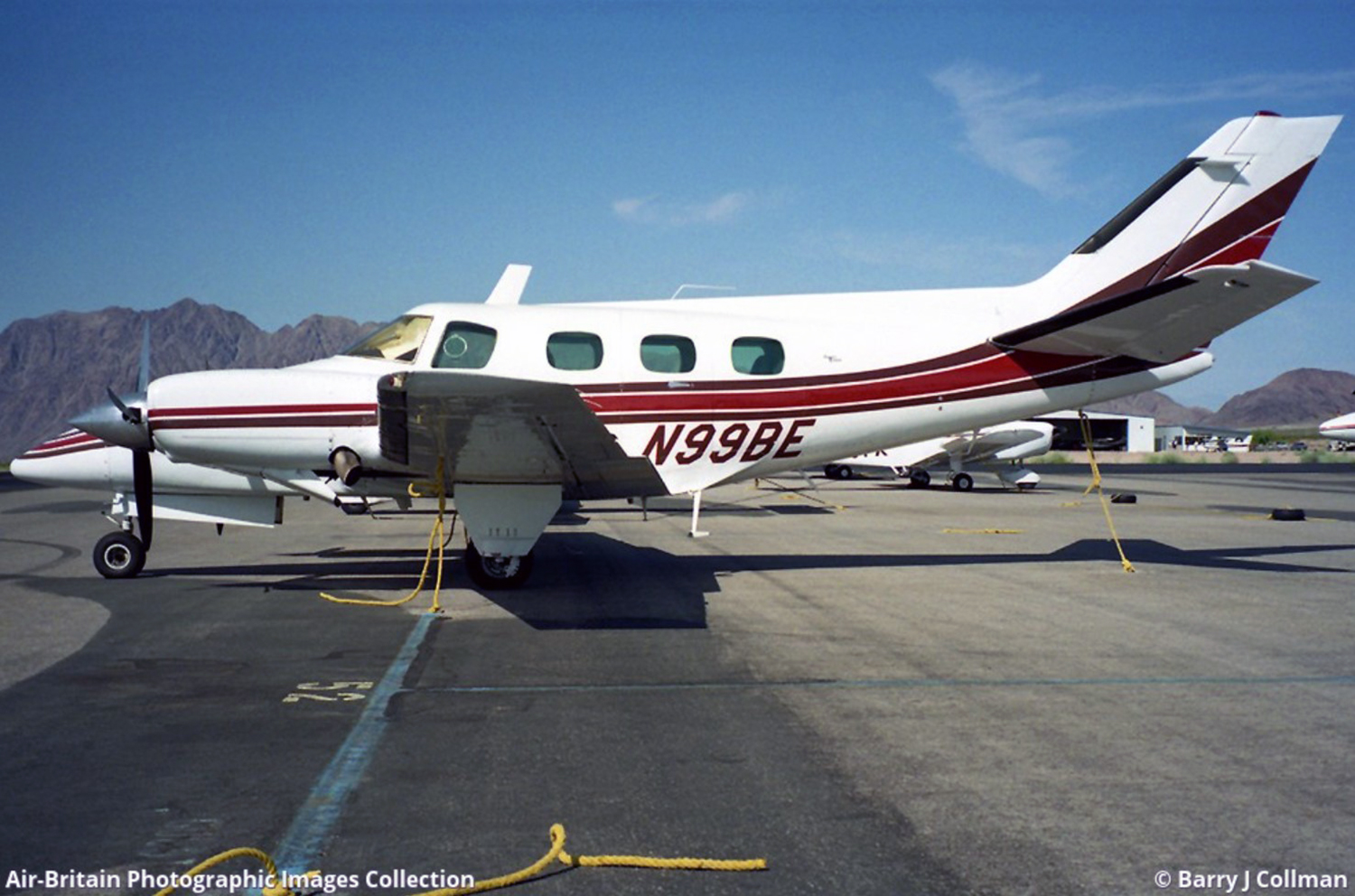
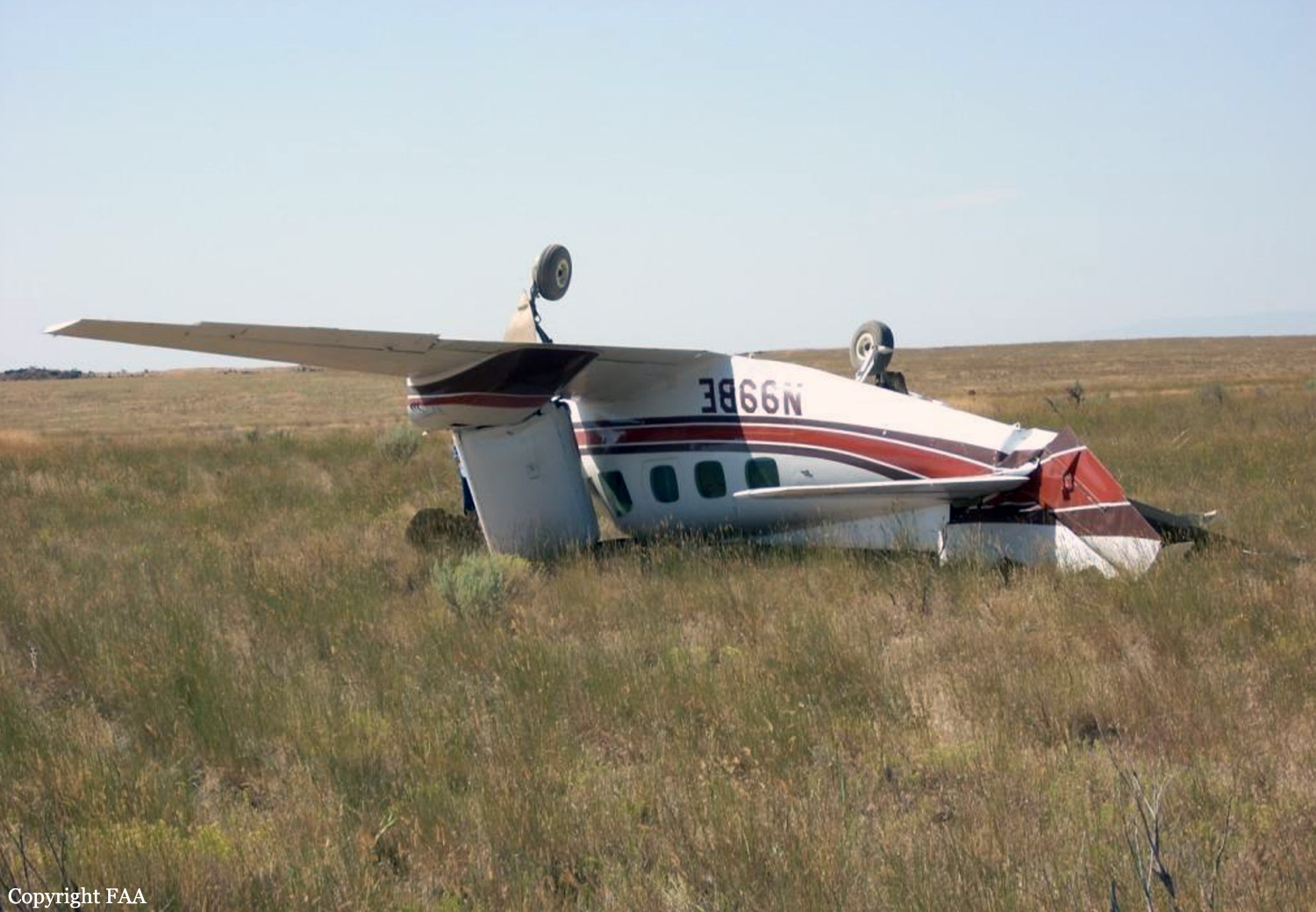
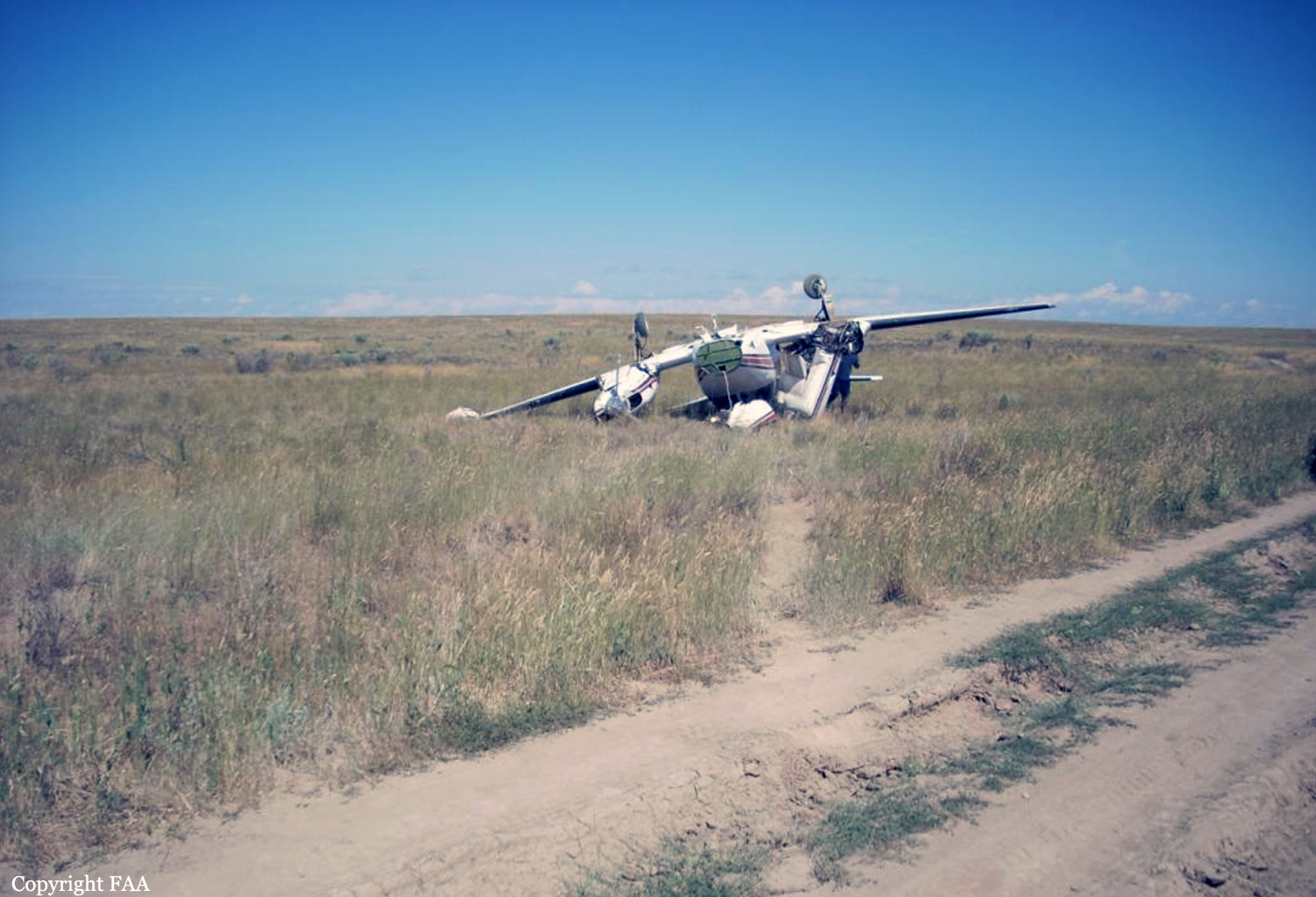
Crash of a Beechcraft 200 Super King Air in Salmon: 2 killed
Date & Time:
Dec 10, 2007 at 0755 LT
Registration:
N925TT
Survivors:
Yes
Schedule:
Salmon - Boise
MSN:
BB-746
YOM:
1981
Crew on board:
1
Crew fatalities:
Pax on board:
3
Pax fatalities:
Other fatalities:
Total fatalities:
2
Captain / Total hours on type:
75.00
Aircraft flight hours:
10885
Circumstances:
The pilot removed the airplane from a hangar that was kept heated to about 60 degrees Fahrenheit, and parked it on the ramp while awaiting the arrival of the passengers. The outside temperature was below freezing, and a steady light to moderate snow was falling. The airplane sat in the aforementioned ambient conditions for at least 45 minutes before the initiation of the takeoff roll. Prior to attempting the takeoff, the pilot did not remove the accumulated snow or the snow that had melted on the warm airframe and then refroze as ice. The surviving passengers said that the takeoff ground run was longer than normal and the airplane lifted off at 100 knots indicated and momentarily touched back down, and then lifted off again. Almost immediately after it lifted off the second time, the airplane rolled into a steep right bank severe enough that the surviving passengers thought that the wing tip might contact the ground. As the pilot continued the takeoff initial climb, the airplane repeatedly rolled rapidly to a steep left and right bank angle several times and did not seem to be climbing. The airplane was also shuddering, and to the passengers it felt like it may have stalled or dropped. The pilot then lowered the nose and appeared to attain level flight. The pilot made a left turn of about 180 degrees to a downwind for the takeoff runway. During this turn the airplane reportedly again rolled to a steeper than normal bank angle, but the pilot successfully recovered. When the pilot initiated a left turn toward the end of the runway, the airplane again began to shake, shudder, and yaw, and started to rapidly lose altitude. Although the pilot appeared to push the throttles full forward soon after initiating the turn, the airplane began to sink at an excessive rate, and continued to do so until it struck a hangar approximately 1,300 feet southwest of the approach end of runway 35. No pre-impact mechanical malfunctions or failures were identified in examinations of the wreckage and engines.
Probable cause:
An in-flight loss of control due to the pilot's failure to remove ice and snow from the airplane prior to takeoff. Contributing to the accident were the pilot's improper preflight preparation/actions, falling snow, and a low ambient temperature.
Final Report:
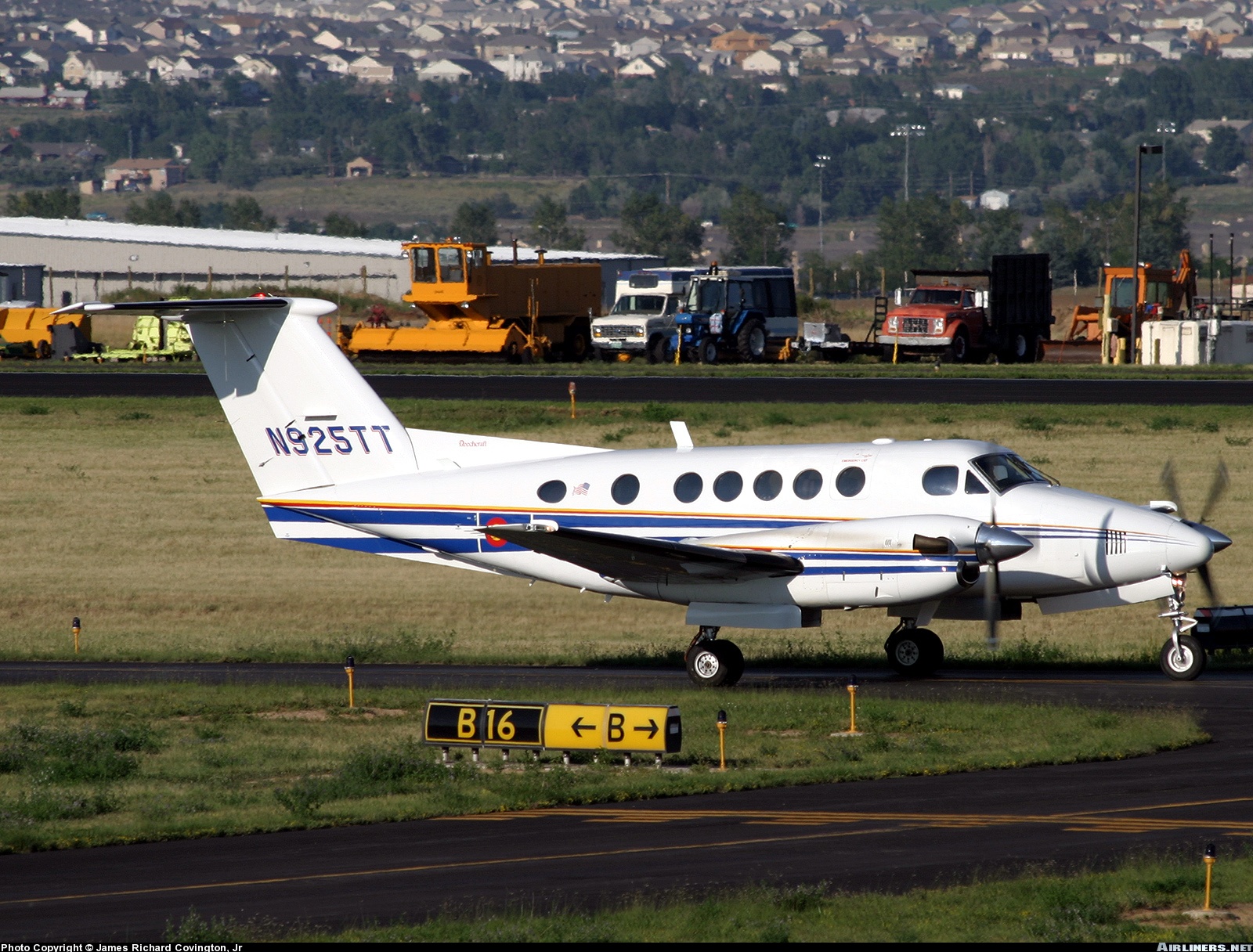

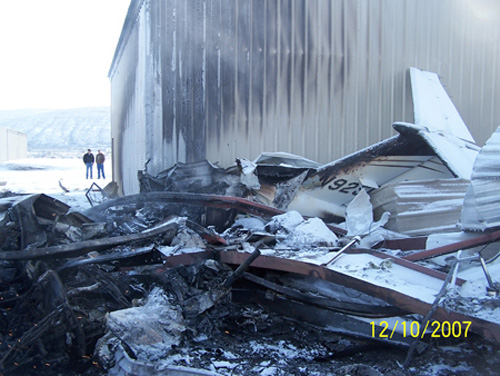
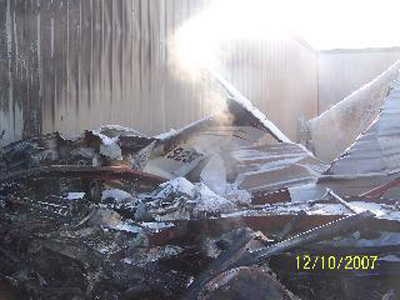
Crash of a Cessna 208B Grand Caravan in Hailey: 2 killed
Date & Time:
Dec 6, 2004 at 1723 LT
Registration:
N25SA
Survivors:
No
Schedule:
Salt Lake City – Hailey
MSN:
208B-0866
YOM:
2000
Flight number:
MBI1860
Crew on board:
1
Crew fatalities:
Pax on board:
1
Pax fatalities:
Other fatalities:
Total fatalities:
2
Captain / Total hours on type:
202.00
Aircraft flight hours:
2117
Circumstances:
Weather reporting facilities reported icing conditions in the area of the accident site. The pilot of a Cessna Citation flying the same RNAV approach twenty minutes prior to the accident aircraft reported picking up light to occasional moderate rime ice. The last communication between the local air traffic controller and the accident pilot indicated that the flight was two miles south of the final approach fix. The controller inquired if the pilot had the runway in sight, and the pilot reported "negative, still IMC." A witness on the ground near the accident site reported that he heard the aircraft first then saw it at a low level below the cloud base flying in a southeasterly direction. The witness stated that the right wing was lower than the left as the aircraft continued to descend. The witness then noted that the wings were moving "side to side" (up and down) a couple of times before the nose of the aircraft dropped near vertical to the terrain. This witness reported hearing the sound of the engine running steady throughout the event. The wreckage was located in a flat open field about 3,000 feet south of the final approach fix coordinates. The aircraft was destroyed by impact damage and a post crash fire.
Probable cause:
The pilot's failure to maintain aircraft control while on approach for landing in icing conditions. Inadequate airspeed was a factor.
Final Report:
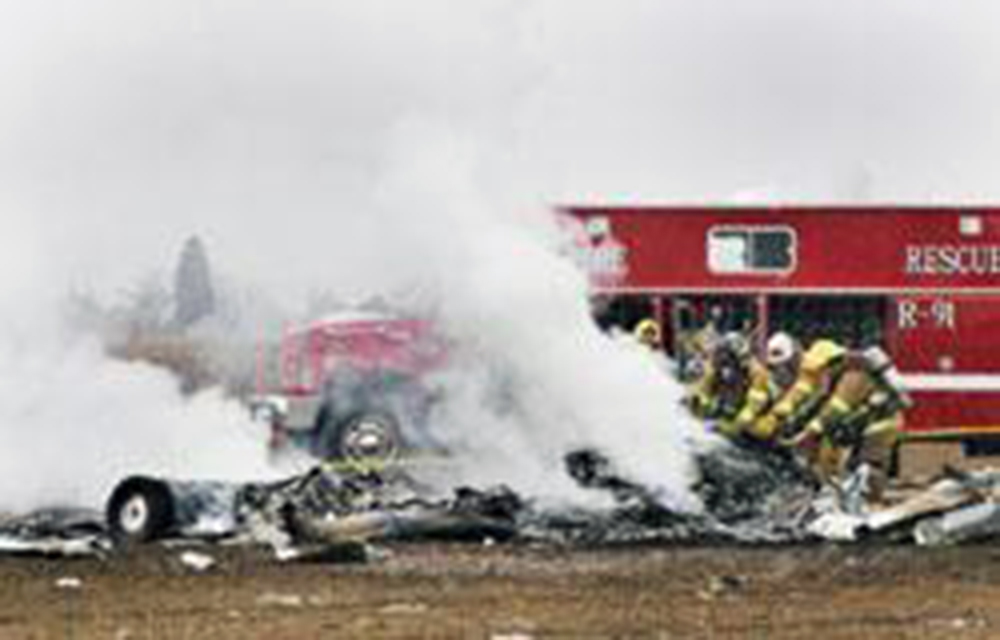
Crash of a Cessna 501 Citation I/SP near Carey: 3 killed
Date & Time:
Mar 15, 2003 at 1425 LT
Registration:
N70FJ
Survivors:
No
Schedule:
Salt Lake City – Sun Valley
MSN:
501-0073
YOM:
1978
Crew on board:
1
Crew fatalities:
Pax on board:
2
Pax fatalities:
Other fatalities:
Total fatalities:
3
Captain / Total hours on type:
1382.00
Aircraft flight hours:
7120
Circumstances:
At 1407:11 the flight was cleared from Flight Level (FL) 240 to descend and maintain FL190. At 1409:08 the controller cleared the flight to descend and maintain 15,000 feet, and at 1409:17 the pilot read back the clearance in its entirety. At 1410:20 the controller instructed the pilot to expedite his descent through 16,000 feet for traffic; however, there was no response. From 1410:33 to 1417:21 the controller made ten attempts to contact the pilot; again, there was no response. At 1417:26 the controller requested the pilot to ident if he could still hear him. At 1417:38 the controller received an ident from the aircraft and instructed the pilot to descend and maintain 15,000 feet. At 1418:36 the controller cleared the aircraft for the GPS approach and to acknowledge with an ident. There was no response. The aircraft had impacted a rocky drainage trench near the base of rock outcropping on a magnetic heading of 200 degrees in a wings level, approximately 40-degree nose down attitude, 15 nautical miles east-southeast of the destination airport at an elevation of 5,630 feet mean sea level. An examination of the aircraft's flight control, pressurization, and electrical systems revealed no anomalies with these systems which would have precluded normal operations. A further examination of the thermal damage to the aircraft, determined that there was no evidence of an inflight fire. Both engines underwent a complete teardown examination revealing no evidence of catastrophic or pre accident failure, and that both engines were functioning at the time of impact. Radar data revealed the aircraft was in level flight at FL 190 for more than 4 minutes, when it had previously been cleared to 15,000 feet. It subsequently began a climb reaching an altitude of 20,300 feet before beginning a right descending turn followed by a left descending turn. The last radar return before radar contact was lost indicated the aircraft was at 15,900 feet and descending. No evidence was available that suggests icing greater than light rime icing was present in the area and that weather was unlikely to have been a factor in the accident. The pilot was on two medications for high blood pressure and one for high cholesterol. The pilot had recently been found to have an elevated blood sugar, suggesting early diabetes or some other systemic disease or injury. The pilot had a family history of heart disease and high blood pressure, and had at least one episode of chest tightness in the past. It is possible that he had some unrecognized heart disease. The circumstances of the accident suggest substantial impairment or incapacitation of the pilot. It is possible that the pilot experienced an event such as a stroke or heart attack related to his previous medical conditions or as a new occurrence. It is also possible that he became hypoxic as a result of a decompression event without using supplemental oxygen. There is insufficient information to conclude any specific cause for the pilot's impairment or incapacitation
Probable cause:
Pilot incapacitation for unknown reasons.
Final Report:
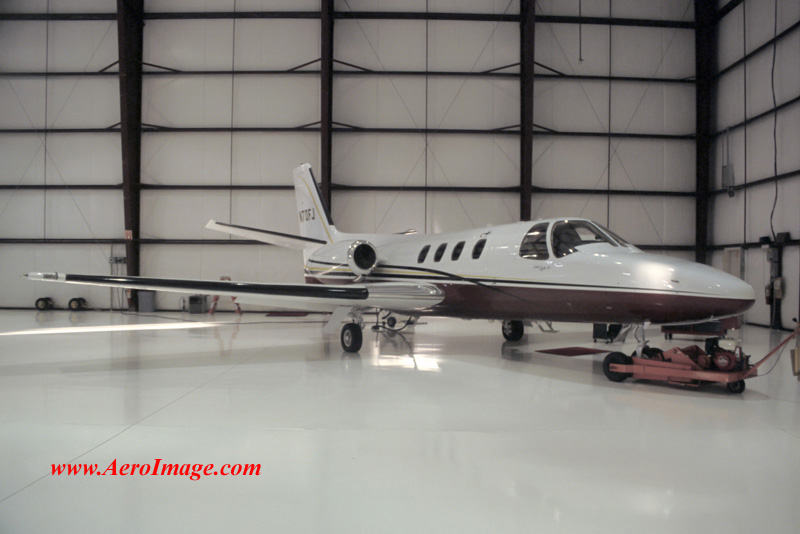
Crash of a Piper PA-31-310 Navajo near Atlanta: 3 killed
Date & Time:
Mar 12, 2002 at 1437 LT
Registration:
N2336V
Survivors:
No
Schedule:
Idaho Falls - Boise
MSN:
31-135
YOM:
1968
Crew on board:
1
Crew fatalities:
Pax on board:
2
Pax fatalities:
Other fatalities:
Total fatalities:
3
Captain / Total hours on type:
338.00
Aircraft flight hours:
7940
Circumstances:
The aircraft was cleared direct and to climb to 14,000 feet. During the climb out, the controller inquired several times as to the flights altitude. The pilot's response to the controllers queries were exactly 10,000 feet lower than what the controller was indicating on radar. Eventually the controller instructed the pilot to stop altitude squawk, which he did. During the last communication with the pilot, he reported that he was level at 14,000 feet. During the next approximately 45 minutes, the aircraft was observed proceeding generally in the direction of its destination. When the controller observed the flight track turn approximately 45 degrees to the right and headed generally northwest, he attempted to contact the pilot without a response. The tracking then turned about 90 degrees to the left for a few minutes, then turned 180 degrees to the right. The aircraft dropped from radar coverage shortly thereafter. On site investigation revealed that the aircraft broke-up in flight as the wreckage was scattered generally east-to-west over the mountainous terrain for approximately .3 nautical miles. Further investigation revealed that the right wing separated at the wing root in an upward direction. Separation points indicated features typical of overload. The right side horizontal stabilizer separated upward and aft. The left side horizontal stabilizer remained attached however, it was twisted down and aft. The aft fuselage was twisted to the left. Both engines separated in flight from the wings. Post-crash examinations of the airframe and engines did not reveal evidence of a mechanical failure or malfunction. Both altimeters were too badly damaged to test. Autopsy and toxicology results indicated that the pilot had severe coronary artery disease with greater than 95% narrowing of the left anterior descending coronary artery by atherosclerotic plaque. The coroner also reported that superimposed upon this severe narrowing was complete occlusion of the lumen by brown thrombus. Toxicology results indicated a moderate level of diabetes. The pilot's actions leading up to the accident were consistent with an incapacitation due to hypoxia. The role of a possible heart attack was unclear, since it is possible that it occurred as a result of the hypoxia.
Probable cause:
The pilot's failure to maintain aircraft control while in cruise flight which resulted in the in-flight separation due to overload of the spar at the right wing root. Hypoxia was a factor.
Final Report:
Crash of a Cessna 425 Conquest I in Idaho Falls: 2 killed
Date & Time:
Nov 10, 2000 at 1215 LT
Registration:
N41054
Survivors:
No
Schedule:
Idaho Falls - Idaho Falls
MSN:
425-0172
YOM:
1983
Crew on board:
2
Crew fatalities:
Pax on board:
0
Pax fatalities:
Other fatalities:
Total fatalities:
2
Aircraft flight hours:
4027
Circumstances:
The accident aircraft had recently had maintenance work performed on its autofeather system pressure sensing switches, due to reports of the left engine not autofeathering properly in flight. The purpose of the accident flight was to verify proper inflight operation of the autofeather system following the maintenance work on the autofeather pressure sensing switches and a successful ground check of the autofeather system. Air traffic control (ATC) communications recordings disclosed that the pilot called ready for takeoff from runway 2 approximately 1207, and requested to orbit above the airport at 8,000 feet (note: the airport elevation is 4,740 feet.) The pilot subsequently reported established in a hold above the airport at 8,000 feet approximately 1213, and was instructed by ATC to report leaving the hold. Approximately 1215, an abbreviated radio transmission, "zero five four," was recorded. The Idaho Falls tower controller responded to this call but never got a response in return from the accident aircraft, despite repeated efforts to contact the aircraft. Witnesses reported that the aircraft banked to the left, or to the west, and that it entered a spiral from this bank and crashed (one witness reported the aircraft was flying at 200 to 300 feet above ground level when it entered this bank, and that it performed a "skidding" or "sliding" motion part way through the bank, about 1 second before entering the spiral.) The aircraft crashed about 2 miles north of the airport. On-site examination disclosed wreckage and impact signatures consistent with an uncontrolled, relatively low-speed, moderate to steep (i.e. greater than 22 degrees) angle, left-wing-low impact on an easterly flight path. No evidence of flight control system malfunction was found, and a large quantity of jet fuel was noted to be aboard the aircraft. Post-accident examination of the aircraft's engines indicated that the left engine was most likely operating in a low power range and the right engine was most likely operating in a mid to high power range at impact, but no indications of any anomalies or distress that would have precluded normal operation of the engines prior to impact was found. Post-accident examination of the aircraft's propellers disclosed indications that 1) both propellers were rotating at impact, 2) neither propeller was at or near the feather position at impact, 3) both propellers were being operated with power at impact (exact amount unknown), 4) both propellers were operating at approximately 14º to 20º blade angle at impact, and 5) there were no propeller failures prior to impact. Post-accident examination of the autofeather pressure sensing switches disclosed evidence of alterations, tampering, or modifications made in the field on all but one switch (a replacement switch, which had been installed just before the accident flight during maintenance) installed on the aircraft at the time of the accident. All switches except for the replacement switch operated outside their design pressure specifications; the replacement switch operated within design pressure specifications. Examination of the switches indicated that all switches were installed in the correct positions relative to high- or low-pressure switch installations. Engineering analyses of expected autofeather system performance with the switches operating at their "as-found" pressure settings (vice at design pressure specifications) did not indicate a likelihood of any anomalous or abnormal autofeather system operation with the autofeather switches at their "as-found" pressure settings. Also, cockpit light and switch evidence indicated that the autofeather system was not activated at the time of impact. The combination of probable engine power and propeller pitch on the left engine (as per the post-accident engine and propeller teardown results) was noted to be generally consistent with the "zero-thrust" engine torque and propeller RPM settings specified for simulated single-engine practice in the aircraft Information Manual.
Probable cause:
The pilot-in-command's failure to maintain adequate airspeed with an asymmetric thrust condition, resulting in a loss of aircraft control. A factor was an asymmetric engine thrust condition, which was present for undetermined reasons.
Final Report:
Crash of a Mitsubishi MU-2B-60 Marquise in Lewiston: 1 killed
Date & Time:
Feb 11, 2000 at 0815 LT
Registration:
N152BK
Survivors:
No
Schedule:
Boise – Lewiston
MSN:
1537
YOM:
1982
Flight number:
BKJ152
Crew on board:
1
Crew fatalities:
Pax on board:
0
Pax fatalities:
Other fatalities:
Total fatalities:
1
Captain / Total hours on type:
1500.00
Aircraft flight hours:
5460
Circumstances:
The airplane impacted a ridgeline about 1.5 miles from the runway and approximately 7 to 14 seconds after the pilot reported a dual engine flameout. The airplane's altitude was about 400 feet agl when the pilot reported the flameout. The inspection of the airplane revealed no preexisting anomalies. Icing conditions were forecast and PIREPS indicated that light to moderate rime/mixed icing conditions existed along the route of flight. The Continuous Ignition switches were found in the OFF position. The Approach procedures listed in the Airplane's Flight Manual stated, 'CONTINUOUS IGNITION SHALL BE SELECTED TO ON DURING APPROACH AND LANDING WHILE IN OR SHORTLY FOLLOWING FLIGHT IN ACTUAL OR POTENTIAL ICING CONDITIONS.' The aircraft manufacturer had issued a Service Bulletin in 1995 for the installation of an auto-ignition system to '... reduce the possibility of engine flame-out when icing conditions are encountered and the continuous ignition is not selected.' The operator had not installed the non-mandatory service bulletin. On May 5, 2000, the FAA issued an Airworthiness Directive that required the installation of an auto-ignition system. The toxicology test detected extremely high levels of dihydrocodeine in the pilot's blood. The pilot received a special issuance second-class medical certificate on August 22, 1995, after receiving treatment for a self disclosed history of drug abuse. The drug testing that this pilot underwent as a consequence of his previous self disclosed history of drug abuse would not have detected these substances.
Probable cause:
The pilot failed to follow the flight manual procedures and did not engage the Continuous Ignition system resulting in both engines flaming out when the air induction system was blocked with ice. Additional factors to the accident included the hilly terrain, the icing conditions, and the operator not complying with a Service Bulletin for the installation of an auto-ignition system.
Final Report:

